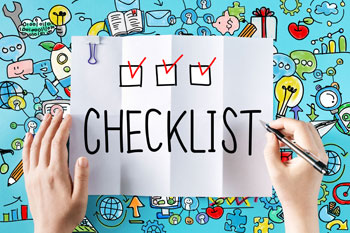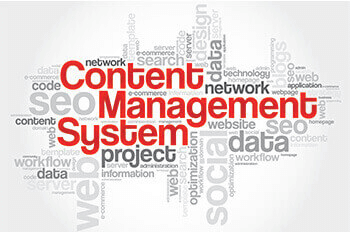Get your free consultation today!
Share with your Colleagues
Categories
ROI Calculator
Moonstone Interactive is the only San Francisco Bay Area web design firm and Internet Marketing expert that offers a free online ROI Calculator
Author: Steve Herz

A decent website conversion rate may vary significantly depending on the business you are in and the type of page you operate. A business-to-business (B2B) buyer's journey is lengthier and more reliant on nurturing than the usual eCommerce store. Thus, an eCommerce website will expect a higher conversion rate than a B2B business.
The B2B company will also need to pay particular attention to the conversion rates for smaller, early conversions like enrolling for an email newsletter or accessing gated material. These engagement-type conversion rates make it easier for them to follow their clients as they progress through the more complex buyer's journey.
What Is the Website Conversion Rate?
Your conversion rate is how many visitors or users finish a targeted activity on your website or app. The action might be anything from purchasing to signing up for a membership or subscription to downloading content, among other options.
Your website conversion rate, shown as a percentage, might vary significantly between items and pages. It is a crucial indicator for determining how well your marketing and sales plan works for goods or services.
What constitutes a reasonable conversion rate varies from industry to industry, just as your conversion rates may range throughout your goods and sites. The following sections describe how to find your conversion rate, judge whether it's good, and increase it.
Conversion Rate: Why Is It Important?
A reasonable conversion rate is crucial for several reasons. The conversion rate is vital since it informs you of the effectiveness of your web pages, emails, and advertisements. You can see what is and isn't working thanks to this.
Improving the conversion rate can significantly increase the following:
- Sales from the same amount of traffic
- Email signups
- Your return on investment (ROI) of your marketing campaigns
You can do more with less effort if you measure, monitor, and optimize your conversion rate. It's essential to your company's success.
Benefits of Improved Conversion Rates
These are the main reasons why businesses in every industry strive to improve their conversion rate websites:
Additional Leads and New Clients
You may produce more leads and attract more consumers when your website visitors are more likely to stay on your site for longer. Higher engagement results from the conversion optimization work you have been performing.
Improved Return on Investment for Paid Advertising
The ROI increases when you receive more visitors and transactions for your money. You lower your cost per visitor and receive more conversions from your paid adverts.
Reduced Costs for Customer Acquisition
Your client acquisition cost is the number of conversions you receive in return for particular investments. The cost decreases as you convert more.
Reduced Bounce Rates
In general, there are about 50% of bounces. Your bounce rate depends on your sector, but you are doing well if you can retain more than 50% of your website visitors looking at your site or sites.
Enhanced Digital User Experience
People are satisfied with the visiting experience if they can easily navigate your website and if it has a clear and attractive design. Happy clients are more likely to return to your website, which can lead to more business.
Increase Your Knowledge of Your Clients
You should develop buyer personas that mimic your target demographic. These personas can assist you in understanding better their motivations and how conversion rate optimization (CRO) may impact them. You gain more knowledge about your paying clients when you experiment with various solutions and can enhance the customer experience.
Improved Customer Lifetime Value
Customers are more likely to return if your online store is simpler to use and navigate or if your website delivers more compelling value than the competition. They will make repeated purchases from you and increase your client's lifetime value over time.
Maximum Return on Marketing Investment
When you optimize your marketing and user experience, your CRO process ensures that the traffic results in conversions. The net impact is increased conversions for the same marketing budget, maximizing your ROI.
How To Interpret Your Conversion Rate?
As decided by your conversion rate objective, your conversions are the numerator. Your overall pool of traffic, which often consists of leads, unique visitors, or session counts, will be measured by the denominator.
As stated before, your conversion rate is a percentage. You can calculate the conversion rate using one of three simple formulae. What you identify as the conversion event and how you plan to track traffic will determine which option is appropriate for your case.
- Calculate by dividing the total number of conversions by the total number of leads.
- Calculate by dividing total conversions by the number of unique visitors.
- Calculate the sum of all conversions divided by the sum of all sessions.
For example:
- If you have 500 leads and 50 conversions, then your conversion rate is 10%.
- If you have ten unique visitors delivering 50 conversions, your conversion rate is 20%.
- If you run 1000 sessions to get 50 conversions, your conversion rate is 5%
What Is the Best Conversion Rate?
It is best to consider various criteria when deciding whether or not your conversion rate is the best result rate and where it should be. Your website's conversion rate depends on a variety of factors.
Examples of factors that significantly impact conversion rates include mobile optimization, site navigation, UX design, page load speed, copywriting, SEO, and forms. Additionally, you have to take your particular industry's averages into account.
What Is a Good Sales Conversion Rate? Typically, a rate of 2% to 5% is acceptable. Above 10%, sales conversion rates are optimal.
The top 25% of B2B organizations retain a conversion rate average of 4.31%, while B2B companies as a whole average 2.23%. The conversion rate average for the top 10% is 11.70%.
How to Improve Your Conversion Rate
Conversion rate optimization (CRO) is raising your conversion rate. You may use a variety of tactics to increase your conversion rate. Here are the top examples for obtaining the best conversion rate.
Analyze Your Sales and Landing Pages
Sometimes, if conversion rates must be significantly better, the solution is to start over. Occasionally, all it takes is altering calls-to-action or the font's color and size. Experimentation with UX may be appropriate.
Clarify Your Offer
Be prepared for low conversion rates if your offer needs to be more precise or better written. It makes no difference if it's a landing page, a sales page, or even an opt-in form. You must make sure your communication is clear and to the point.
Don't mince words; be direct about what you're offering. You can expect higher conversion rates if your offer is clear and compelling for the targeted persona. For instance, if you're using a lead magnet to gain someone's email, write your offer like this.
- “My free e-book is right here!”
- “Click here to access my free e-book on increasing conversion rates.”
Conduct A/B Split Testing
Small details like typeface or header can significantly impact your conversion rate. You may improve your conversion rate by doing split testing (A/B) on these items.
Running two versions of anything and comparing the outcomes is known as an A/B split test. For instance, you may test two sales pages and see which generated more conversions.
Here are some things you can test using A/B comparisons:
- Offer or messaging
- Headings
- Font sizes
- Content body texts
- CTA text, color
You should do an A/B split test on each variable you can adjust. You'd be shocked at how significantly a minor modification may affect the conversion rate.
Include Social Proof
If not exclusively, then in large part, testimonials, video testimonials, and evaluations from current customers make up the most effective marketing. You would be in for a surprise if you believed this to be more of a business-to-consumer (B2C) issue.
Social proof is a big part of B2B marketing, and it goes beyond just adding the logos of your most well-known clients to your website. You can use a similar strategy to increase email conversion rates.
What Conclusions Can You Draw From Your Conversion Rate?
By calculating your conversion rate, you will better understand how many website visitors take the required action. If the figure is too low, your page fails to engage the target audience sufficiently.
Suppose the page needs to motivate qualified leads better to complete a conversion effectively. In that case, it may necessitate adjustments to its messaging, structure, and optimization. It would be best if you also considered whether the leads and traffic you attract need to correspond better with the target market for your product. If you are attracting the wrong visitors, assess your marketing strategy, including your messaging, traffic channels, and campaigns.
You want to start with a baseline conversion rate when you design your website and start to optimize it. This benchmark will enable you to begin to comprehend how adjustments you make to your website affect your rate.
If your rate increases, you will understand what appeals to and motivates your potential consumers to participate. On the other hand, if it decreases, it will be apparent that your clients are not pleased with your modifications.
You will better understand potential seasonal variations in conversion activity by tracking conversion rates over time. You can observe high conversion rates at some seasons of the year; at other times, they may decline.
Observing how these rates match your revenue might help you better understand client trends. Finding these trends can help you better understand your website and ensure that your material is available to potential clients all year.
Let’s talk about how to increase your conversion rate! Contact us for more details.


